Adjusting your bike's boost fork can significantly enhance your riding experience, providing better handling and performance on various terrains. A boost fork, like the Trifox 29er Disc Brake Tapered Carbon MTB Rigid Fork Boost TA TMK200, is designed to offer increased stiffness and improved wheel support for more precise control. Here’s a step-by-step guide to adjusting your boost fork for optimal performance.
1. Understanding Boost Forks
A boost fork features wider hub spacing (typically 110mm) compared to standard forks, allowing for better wheel stability and more robust performance, especially on rough terrain. This design enhances the bike’s overall performance by increasing the contact area between the tire and the ground, offering superior traction and control.
2. Gather Your Tools
Before you begin, ensure you have the necessary tools: a torque wrench, Allen keys, and a shock pump if you're dealing with an adjustable air fork. For the Trifox rigid fork, you’ll mainly need Allen keys and the appropriate torque settings.
3. Remove the Front Wheel
Start by loosening the axle nuts or quick-release lever to remove the front wheel. This gives you clear access to the fork and ensures you can make precise adjustments without the wheel in place.
4. Adjusting the Fork Alignment
Ensuring your boost fork is properly aligned is crucial for optimal performance. Place the fork in the correct position on the bike frame and use the Allen keys to tighten the bolts evenly. Avoid over-tightening and ensure everything is securely fastened according to the manufacturer’s specifications.
5. Setting the Correct Torque
Using a torque wrench, tighten the bolts to the specified torque setting provided by the manufacturer. Over-tightening can damage the fork or frame, while under-tightening can lead to instability. Refer to the user manual of the Trifox fork for precise torque values.
6. Fine-Tuning Suspension Settings (if applicable)
If your boost fork includes suspension settings, such as preload, compression, or rebound adjustments, refer to the manufacturer’s guidelines for setting these to match your riding style and weight. The Trifox rigid fork does not include these settings, making it simpler to adjust.
7. Reinstall the Front Wheel
Place the front wheel back into the fork dropouts, ensuring it is centered correctly. Tighten the axle nuts or quick-release lever to secure the wheel. Spin the wheel to check for proper alignment and ensure there is no wobble.
8. Perform a Test Ride
Take your bike for a short test ride to ensure the adjustments have improved your ride quality. Pay attention to how the bike handles, especially on rough terrain and during turns. Make any minor adjustments as needed based on your riding experience.
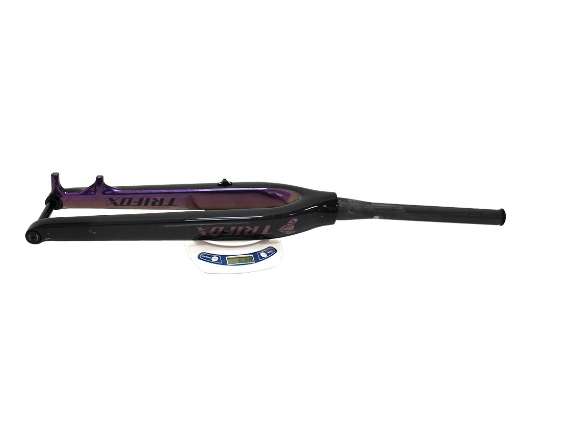
Adjusting your boost fork, such as the Trifox 29er Disc Brake Tapered Carbon MTB Rigid Fork Boost TA TMK200, is a straightforward process that can significantly enhance your bike’s performance. By ensuring proper alignment, correct torque settings, and fine-tuning suspension (if applicable), you can enjoy a smoother, more controlled ride.
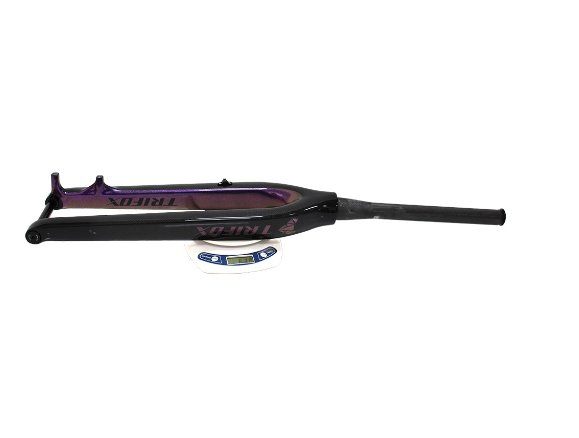
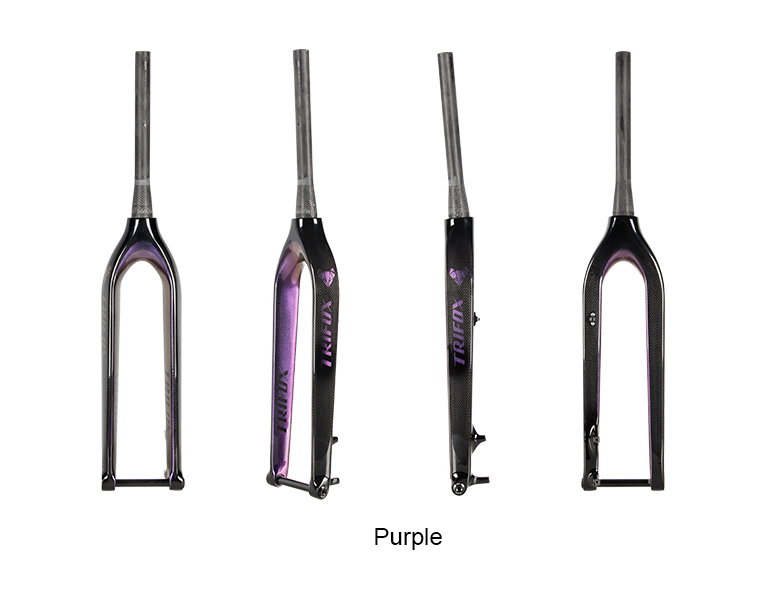
Choosing the right rigid MTB fork can make a significant difference in your mountain biking experience. Whether you're an avid off-road adventurer or a casual trail rider, selecting a fork that complements your riding style and bike setup is crucial. Here's a guide to help you make the perfect choice.
1. Understand Your Riding Style
Before diving into specifications, consider how and where you ride. If you enjoy technical trails with lots of obstacles, you'll need a fork that offers excellent strength and durability. For smoother paths and long-distance rides, a lightweight fork with good responsiveness might be more suitable.
2. Material Matters
One of the primary factors to consider is the fork's material. Carbon fiber forks, like the Trifox TMK100, offer an excellent balance of strength and weight. The TMK100 provides exceptional durability while keeping the weight low, enhancing both performance and handling.
3. Compatibility and Fit
Ensure that the fork is compatible with your bike frame and wheel size. The Trifox TMK100 is designed specifically for 29-inch wheels and features a tapered design from 1-1/8 to 1-1/2 inches, which ensures a snug fit and optimal handling1. Additionally, it is suitable for straight headtubes, making it a versatile option for various mountain bike frames.
4. Brake Compatibility
Having reliable stopping power is essential for mountain biking. The TMK100 is compatible with disc brakes, which provide consistent performance in all weather conditions1. This feature is particularly important for off-road cycling, where you may encounter varying terrains and weather scenarios.
5. Axle Type and Tire Clearance
Check the axle type and tire clearance of the fork. The TMK100 utilizes a thru-axle style, offering increased stiffness and better alignment. It can handle tires up to 2.1 inches, giving you the flexibility to choose wider tires for better traction on rugged trails.
6. Aesthetics and Design
Last but not least, consider the aesthetics and design of the fork. A sleek and modern fork can enhance the overall look of your bike. Reviews have praised the TMK100 for its stylish appearance, which adds an attractive touch to any mountain bike.
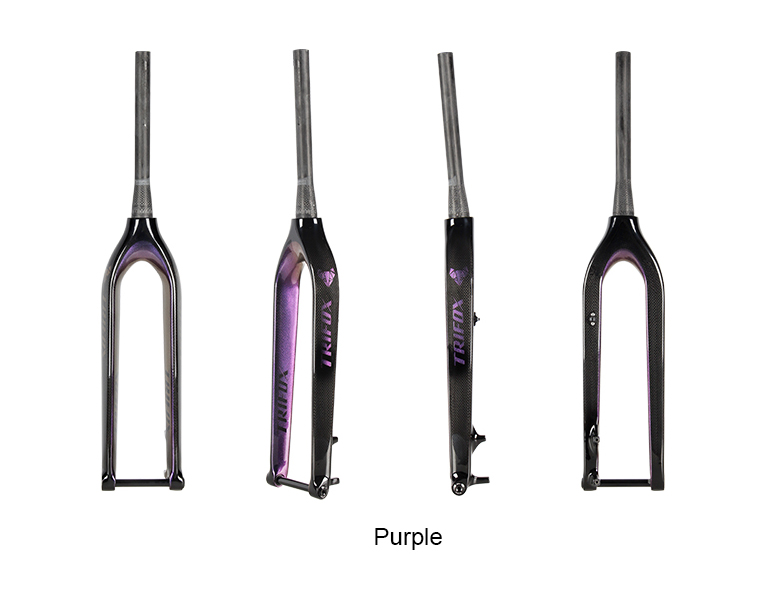
In conclusion, choosing the perfect rigid MTB fork involves considering your riding style, ensuring compatibility, and paying attention to key features like material, brake compatibility, axle type, and design. The Trifox TMK100 stands out as an excellent option, combining lightweight carbon construction with robust performance features. For more details, check it out here.
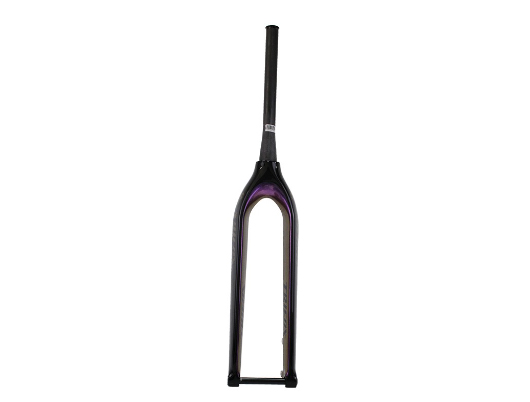
Choosing the right forks for your mountain bike (MTB) can significantly impact your ride quality, handling, and overall biking experience. This is especially true for 29er MTBs, which are designed to roll over obstacles more easily than their smaller-wheeled counterparts. With a plethora of options available on the market, selecting the best forks can be a daunting task.
Understanding Fork Types
Before diving into specific features, it's essential to understand the two primary types of forks available for MTBs:
Rigid Forks: These forks have no suspension and are typically lighter and simpler. They are suitable for smoother trails and riders who prioritize weight savings and simplicity;Suspension Forks: These forks come with built-in shock absorbers, which help absorb impacts from rough terrain, making them ideal for aggressive trail riding and downhill adventures.
Key Factors to Consider
1. Material
The material of the fork plays a crucial role in its performance, weight, and durability. The Trifox carbon bike forks, for instance, are made from high-grade carbon fiber, which offers several advantages:
Lightweight: Carbon fiber is much lighter than steel or aluminum, reducing the overall weight of your bike;Strength and Durability: Despite its lightness, carbon fiber is incredibly strong and durable, capable of withstanding the rigors of intense off-road riding;Vibration Damping: Carbon fiber naturally absorbs vibrations, providing a smoother ride on rough terrain.
2. Travel
Travel refers to the amount of movement a suspension fork can accommodate. It’s measured in millimeters and indicates how much the fork can compress. Here’s a quick guide to help you choose the appropriate travel for your riding style:
80-100mm: Suitable for cross-country riding, offering efficiency and lightweight performance;120-140mm: Ideal for trail riding, providing a balance between uphill efficiency and downhill capability;150mm+: Best for enduro and downhill riding, offering maximum absorption for rough and technical terrain.
3. Compatibility
Ensure that the fork you choose is compatible with your bike’s frame and components. Key compatibility considerations include:
Wheel Size: Make sure the fork is designed for 29-inch wheels;Steerer Tube Diameter: Common diameters are 1-1/8” straight and 1.5” tapered. Check your bike’s head tube specifications;Axle Type and Size: Standard sizes include 9mm quick release and 15mm or 20mm thru-axles. Verify your hub’s specifications.
4. Adjustability
Modern suspension forks often come with various adjustability features to customize the ride feel:
Rebound Adjustment: Controls the speed at which the fork returns to its original position after compressing;Compression Adjustment: Allows you to fine-tune the fork’s compression rate, affecting how it absorbs impacts;Lockout: A feature that locks the suspension, transforming it into a rigid fork for efficient climbing or road riding.
5. Weight
Weight is a critical factor, especially if you’re a competitive rider or frequently tackle long climbs. Carbon fiber forks, like those from Trifox, offer significant weight savings without compromising strength and performance. Lighter forks improve acceleration, climbing efficiency, and overall agility.
6. Price and Value
While top-tier forks come with a higher price tag, they also offer advanced features, superior materials, and better performance. Evaluate your budget and identify the key features that will enhance your riding experience. The Trifox carbon bike forks strike an excellent balance between performance, durability, and cost, making them a great option for serious riders.
Why Choose Trifox Carbon Bike Forks?
Trifox carbon bike forks are a standout choice for several reasons:
Superior Material: Made from high-grade T800 carbon fiber, these forks combine light weight with exceptional strength and durability;Precision Engineering: Trifox forks are meticulously designed to provide optimal performance, whether you're tackling technical trails or cruising smooth singletracks;Versatility: Compatible with a wide range of bikes and components, Trifox forks offer broad customization options to suit your specific needs;Value for Money: Offering premium features at a competitive price point, Trifox carbon bike forks deliver excellent value for both amateur enthusiasts and seasoned riders.
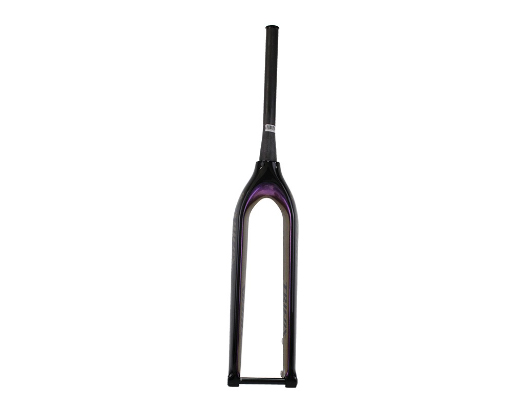
Conclusion
Choosing the right forks for your MTB 29 is essential for optimizing your bike's performance and ensuring a smooth, enjoyable ride. By considering factors such as material, travel, compatibility, adjustability, weight, and price, you can make an informed decision that meets your specific riding needs. Trifox carbon bike forks provide a compelling option, offering advanced features and exceptional performance at a reasonable cost. Invest in the right forks, and elevate your mountain biking experience to new heights!
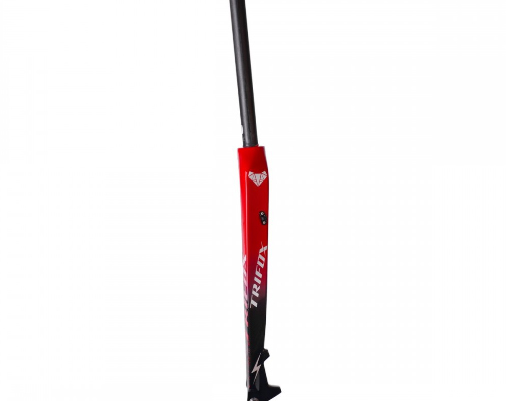
The bike fork plays a pivotal role in your bicycle's performance, absorbing shock from the road and providing control over steering. If you're looking to upgrade your bike with a full carbon fork, or maintain one that's already installed, you've come to the right place.
Understanding the Role of a Full Carbon Fork
Full carbon forks, as the name suggests, are made entirely out of carbon fiber. They offer several advantages. Carbon fiber is lightweight, reducing the overall weight of your bike. It also has excellent vibration damping properties, providing a smoother ride. Additionally, carbon fiber is stiff, which enhances steering precision.
Installing a Full Carbon Fork
Installing a full carbon fork can be a technical task. Unless you have experience with bike maintenance, it may be best to have a professional handle the installation. However, if you're comfortable with DIY bike maintenance, here's a general guide:
1. Remove the Old Fork: The first step is to remove the old fork from your bike. This process will involve removing the front wheel, brakes, and possibly the handlebars to access the fork.
2. Prepare the New Fork: Before installing the new fork, you'll need to prepare it. This might involve cutting the steerer tube to the correct length and installing the crown race.
3. Install the New Fork: Once prepared, you can install the new fork. This involves sliding it into the head tube, reinstalling the headset, and adjusting everything so it fits correctly.
4. Reassemble the Bike: With the new fork installed, you can reassemble the rest of the bike. Be sure to adjust and test everything before you ride.
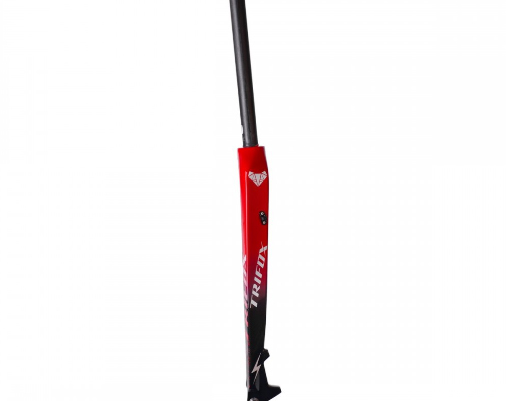
Maintaining a Full Carbon Fork
Once your new full carbon fork is installed, regular maintenance is key to ensure it continues to perform at its best:
1. Regular Cleaning: Keep your carbon fork clean to prevent buildup of dirt and grime that could degrade the material.
2. Inspect for Damage: Regularly inspect your fork for signs of damage. This can include cracks, chips, or any other signs of wear. If you notice anything concerning, have a professional check it out.
3. Service the Headset: The headset, which holds the fork in place, should be serviced regularly to keep everything running smoothly.
4. Avoid Over-Tightening: When making adjustments, avoid over-tightening bolts as this could damage the carbon.
In conclusion, installing and maintaining a full carbon fork on your bike can enhance your cycling experience. Regular maintenance ensures the durability and performance of the fork, providing you with many smooth rides ahead.
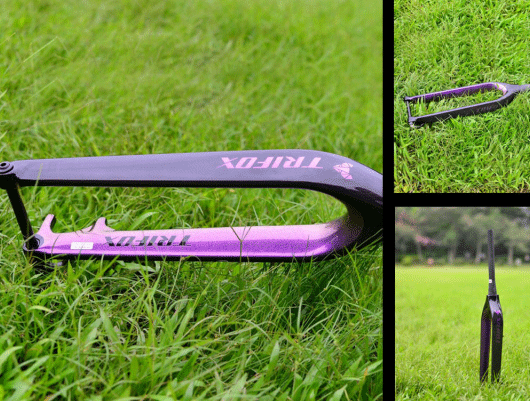
Reforzar una horquilla rígida 29er puede ser una tarea intimidante, pero si se hace correctamente, puede mejorar significativamente la resistencia y durabilidad de la bicicleta.
En este artículo, te guiaremos a través de los pasos para refuerzar correctamente tu horquilla rígida 29er para asegurarte de que puedas disfrutar de tu bicicleta por muchos años más.
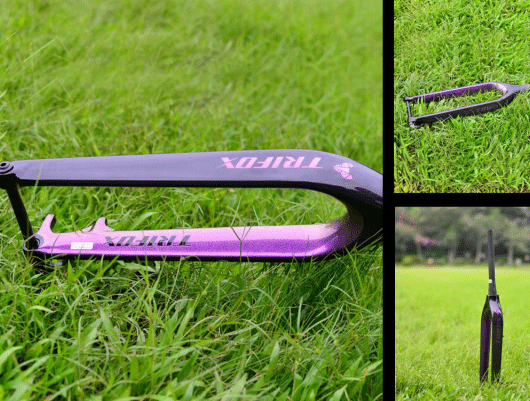
Paso 1: Evalúa la necesidad de refuerzo
Lo primero que debes hacer es evaluar si tu horquilla rígida 29er necesita ser reforzada. Inspecciona la horquilla en busca de signos de deformación, protuberancias, abolladuras o grietas en la superficie. Si notas algún daño notable, es posible que sea necesario reemplazar toda la horquilla en lugar de repararla. Si la horquilla parece estar en buen estado, pero estás buscando una mayor resistencia y durabilidad, entonces el refuerzo puede ser una buena opción.
Paso 2: Reúne los materiales necesarios
Para reforzar una horquilla rígida 29er necesitarás algunos materiales específicos, incluyendo cinta adhesiva de tela, una hoja de plástico o una envoltura de cables. También necesitarás pegamento epoxi para plásticos y un secador de pelo o una pistola de calor.
Paso 3: Cubre la horquilla con la cinta adhesiva
Antes de aplicar cualquier material de refuerzo, asegúrate de que la horquilla esté limpia y seca. Luego, comienza a aplicar cinta adhesiva de tela alrededor de la horquilla, comenzando en la parte inferior y trabajando hacia arriba. Deja un ligero espacio entre las vueltas de cada tira de cinta para permitir la flexibilidad de la horquilla.
Paso 4: Aplica el material de refuerzo
Una vez que la horquilla esté cubierta de cinta adhesiva, es el momento de aplicar el material de refuerzo. Para una mayor resistencia, puedes usar plástico, envoltura de cable o una hoja de aluminio. Comienza en la parte inferior y trabaja hacia arriba, asegurándote de que el material de refuerzo se ajuste a la forma de la horquilla. Aplica el pegamento epoxi en cada lado del refuerzo y presiona firmemente para asegurarte de que esté bien adherido.
Paso 5: Usa un secador de pelo o pistola de calor para fijar el refuerzo
Después de aplicar el refuerzo y el pegamento, utiliza un secador de pelo o una pistola de calor para secar y fijar el material. Asegúrate de seguir las instrucciones del pegamento para asegurarte de que esté completamente curado antes de usar tu bicicleta.
Reforzar una horquilla rígida 29er puede ser una forma efectiva de mejorar su resistencia y durabilidad. Al seguir estos pasos simples, puedes asegurarte de que el refuerzo se realiza correctamente y de que tu bicicleta estará lista para soportar cualquier terreno.
Sin embargo, es importante tener en cuenta que si notas algún daño significativo en la horquilla, puede ser mejor reemplazarla completamente en lugar de repararla.
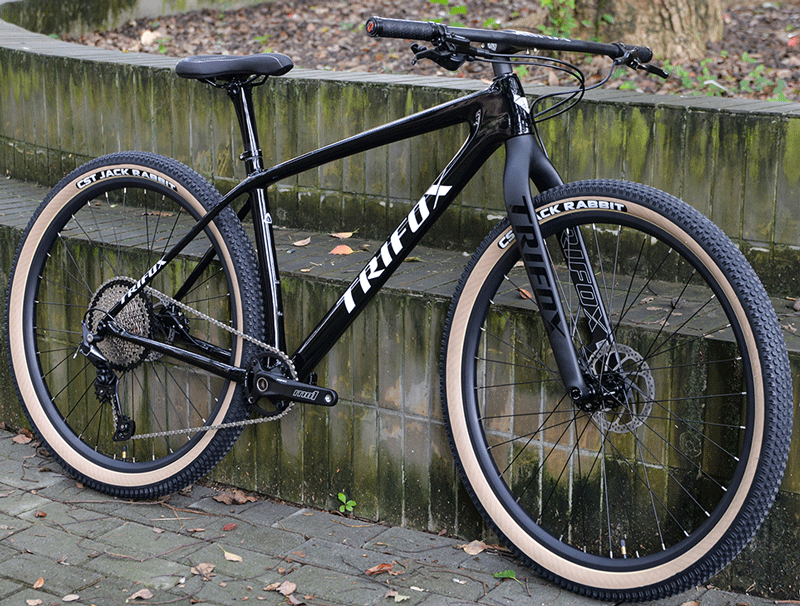
Mountain biking is an exhilarating and challenging outdoor activity that requires the right equipment to tackle the unpredictable terrain. A 29er mountain bike fork is a critical component that provides stability, control, and comfort to riders. It is designed to absorb shocks, vibrations, and impacts, and ensure smooth and safe riding. With plenty of options available in the market, choosing the right fork can be overwhelming.
1. QMK100 Carbon Fork
The QMK100 Carbon Fork is a popular choice among mountain bikers who want a lightweight and durable option with a tapered 1-1/8 to 1-1/2 inches head tube. It has an import carbon construction that makes it sturdy and reliable for challenging surfaces. The fork is also suitable for tires that measure up to 29er * 2.1 inches, so you can tackle different trail types.
2. QMK200 Carbon Fork
The QMK200 Carbon Fork is an excellent option for mountain biking frames that feature a straight head tube. It is engineered to match most mountain bike frames, guaranteeing compatibility and performance. The fork is also designed to fit tires up to 29er * 2.1 inches, so you can enjoy smooth and comfortable rides on different terrains.
3. TMK100 Carbon Fork Disc Brake
The TMK100 Carbon Fork Disc Brake offers reliable stopping power, thanks to its quick-release dropout style. The fork is compatible with disc brakes, ensuring greater control and confidence when riding on different terrains. It has a vertical tube diameter of 28.6mm and weighs 600g, making it a lightweight and practical option for mountain biking enthusiasts.
4. TMK200 Carbon Boost Fork
The TMK200 Carbon Boost Fork is an excellent choice for riders who want a versatile and modern option. It is designed to fit tires up to 29er * 3.0 inches, making it great for handling more challenging surfaces. The fork is compatible with disc brakes that use 160/180mm rotors, guaranteeing reliable stopping power. It also has a fork rake/offset of 45mm for enhanced handling and control.
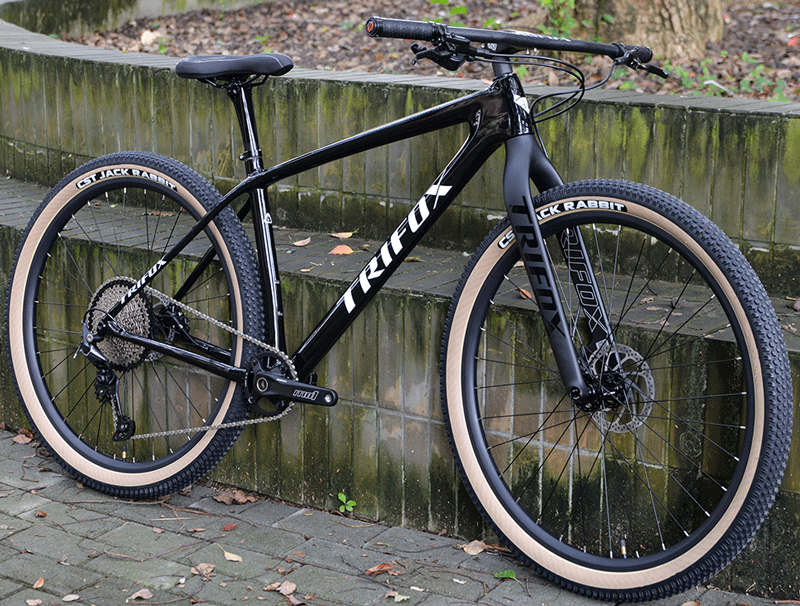
Conclusion:
Choosing the right 29er mountain bike fork is key to enjoying a seamless ride on different surfaces. As highlighted, the QMK100, QMK200, TMK100, and TMK200 Carbon Forks are top options that combine design, compatibility, and performance.
Ultimately, consider your riding style, budget, and personal preferences when selecting the best 29er mountain bike fork for your adventures. With the right fork, you'll have greater control, stability, and confidence when tackling the trails.

If you're serious about mountain biking, you should know that choosing the right bike fork is essential to your riding performance. A good quality fork enhances your riding experience, making it smoother and more efficient on any terrain. There are different types of bike forks available, and choosing one can be a daunting task. But worry not, in this blog post, we will guide you through the process of choosing the right fork for your riding style.
1. Consider the Riding Style
The first thing you need to consider before purchasing a bike fork is your riding style. A rigid fork is excellent for urban and touring biking, but if you’re into mountain biking, a suspension fork may be the right option for you. Depending on the terrain, you may need a fork with a longer travel such as the Trifox 29er Carbon MTB Fork Rigid QMK100 for smooth rides.
2. The Material of the Fork
The material of the fork plays a crucial role in the bike's performance. Carbon fiber is one of the most popular materials used for forks because of its lightweight and durability. The Trifox 29er Carbon MTB Fork Rigid QMK200, for instance, is made from the strongest carbon fiber, which offers incredible pressure resistance. It is perfect for riders who want a lightweight fork and maximum performance.
3. Suspension Type
Most bike riders prefer a suspension fork that comes with different travel options. The Trifox 29er Carbon MTB Fork Rigid TMK100 is a great option because it offers a 3K carbon weave design that is durable and lightweight. It also features a tapered 1-1/8"-1-1/2" which gives you great control over your ride. A fork with a thru-axle is another excellent option that ensures better wheel alignment and maximum performance.
4. Brake Compatibility
The type of brake you use is an essential factor to consider when choosing a bike fork. Each fork is designed to accommodate a specific brake setup, either disc brakes or V-brakes. The Trifox 29er Carbon BOOST MTB Fork Rigid TMK200 is an excellent option for riders who want to use disc brakes because of its compatibility with 160/180mm rotor brakes.
5. Consider the Weight of the Fork
The weight of your bike affects your riding performance greatly, and your fork makes a considerable contribution to it. The Trifox 29er Carbon MTB Fork Rigid QMK200 is one of the lightest forks available, weighing only 550g. It is perfect for riders who are conscious about bike weight and don't want to compromise on performance.
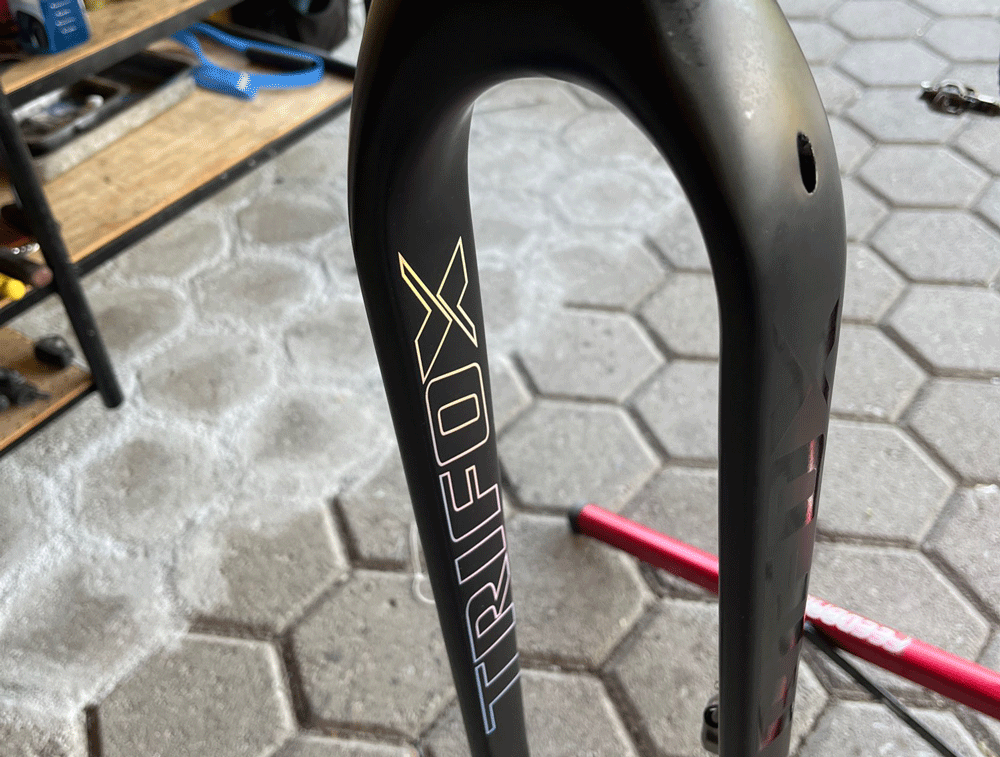
Choosing the right bike fork is essential to ensuring a smooth, comfortable, and performance-enhancing ride. Consider your riding style, the material of the fork, suspension type, brake compatibility, and the weight of the fork. Don't forget to purchase from a reputable dealer and spend time looking for a reliable brand such as Trifox. With the right fork, you'll have one of the best bike riding experiences on any terrain. Happy riding!
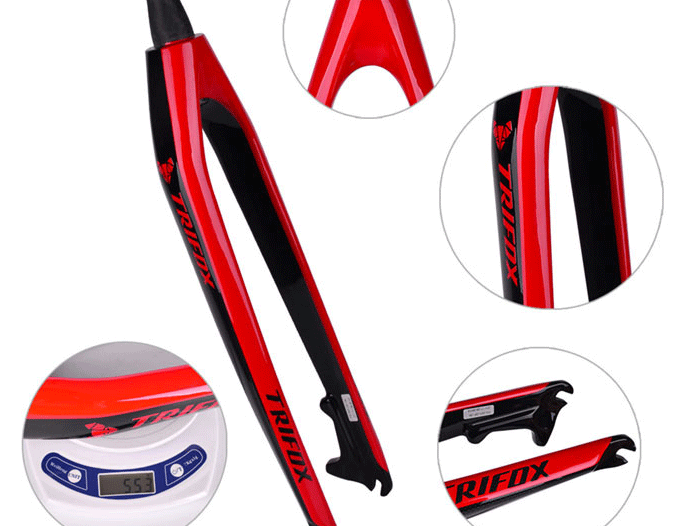
Are you looking for an upgrade to your bike that can take its performance to the next level? If yes, then Trifox has got your back with their 29er bicycle carbon fork QMK100. This fork is known for its excellent performance, lightweight construction, and remarkable durability. In this blog post, we will discuss why you must consider buying this fork for your MTB and how it can enhance your biking experience.
1. Improve the handling of your bike
The Trifox 29er bicycle carbon fork QMK100 is designed to enhance the handling and control of your bike on the trails. This fork is very lightweight, which means it reduces the overall weight of your bike, making it easier to handle. Plus, the tapered style and quick release dropout make for easier steering. So if you've been experiencing difficulty in steering your bike or want a more comfortable ride, the Trifox 29er Carbon MTB Fork Rigid QMK100 is the perfect upgrade.
2. Enjoy a smoother ride
If you frequently ride on rough terrain, you might experience a lot of shaking and vibration in the handlebar. Fortunately, this fork features a carbon construction that reduces the amount of vibration transmitted to the handlebar, reducing arm fatigue and providing you with a smooth ride. With this fork, you will hardly notice when you ride over bumps, rocks, or any other obstacles.
3. More responsive braking experience
The Trifox 29er Carbon MTB Fork Rigid QMK100 comes with disc brake compatibility, which offers a more responsive braking experience. Disc brakes are more powerful and predictable, and they offer better modulation, so you can stop your bike without any difficulty. This feature is particularly beneficial when you are riding in muddy or wet conditions, or if you want to brake quickly when speed is a problem.
4. Long-lasting durability
One of the most significant advantages of the Trifox 29er bicycle carbon fork QMK100 is its long-lasting durability. Made from high-quality T800 Import Carbon, this fork is resistant to wear, corrosion, and damage, ensuring you get a long-lasting return on your investment. Additionally, it employs a glossy finish that not only looks great but also increases durability by making the fork scratch-resistant.
5. Look stylish
Lastly, we can’t forget to mention that the Trifox 29er Carbon MTB Fork Rigid QMK100 is available in two distinctive colors, red and black, that not only make your bike look good but also improve its visibility. You can choose the color that suits your style and match it with your other bike components. Apart from enhancing its appearance, these colors make your bike stand out, which means it is easier for cars and other bikers to see you on the road.

Conclusion:
Overall, the Trifox 29er Carbon MTB Fork Rigid QMK100 is an excellent upgrade for any MTB rider looking to enhance their biking experience. With better handling, smoother ride, disc brake compatibility, long-lasting durability, and stylish appearance, you won't regret investing in this fork.
Whether you are a casual biker or a seasoned professional, the Trifox 29er Carbon MTB Fork Rigid QMK100 is an upgrade worth considering. So what are you waiting for? Get your hands on this fork and take your biking experience to infinity and beyond!
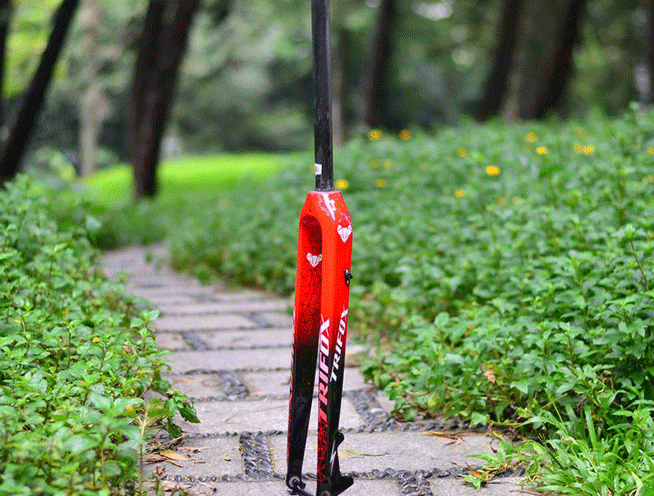
When it comes to mountain biking, one of the most crucial components of your bike is the fork. A good fork will make your ride smoother, absorb shocks, and enhance overall stability. The Trifox 29er Carbon Forks have been making buzz in the MTB world for their superb performance, lightweight structure, and stiffness. These forks are ideal for cross country, endurance, and trail riding, making them a desirable option for riders who seek speed, agility, and reliability.
The Material - Carbon Fiber T800:
One of the main highlights of the Trifox 29er Carbon Forks is the use of T800 carbon fiber, which is known for its high strength-to-weight ratio. This material is not only strong and durable but also incredibly lightweight, making it perfect for MTB racing. With a weight of only 530g (+/-15g), these forks will not weigh you down or hinder your speed. Additionally, carbon fiber is known for its ability to dampen vibration, which means that the Trifox 29er Carbon Forks QMK200 will offer a smoother ride.
The Style - Non-Tapered:
The Trifox 29er Carbon Forks QMK200 come in a non-tapered style, which means that the diameter of the fork remains consistent from top to bottom. This style offers greater stiffness and strength compared to tapered forks, meaning that you will experience less flex and better handling. Non-tapered forks are also easier to install and maintain, making them a popular choice among DIY bike mechanics.
The Weave - 3K:
The Trifox 29er Carbon Forks QMK200 features a 3K weave, which is a type of carbon fiber weave that is common in high-performance MTB components. This weave offers a good balance of strength, stiffness, and weight savings. Additionally, the glossy finish gives the forks a sleek and professional look. It is worth noting that while 3K carbon fiber is not the strongest or lightest type of carbon fiber, it strikes a good balance between performance and cost.
The Brake - Disc Brake:
The Trifox 29er Carbon Forks QMK200 are designed to work with disc brakes, which are becoming increasingly popular in the MTB world due to their superior stopping power and reliability. Disc brakes work by grabbing a rotor that is attached to the wheel hub, making them more efficient than traditional rim brakes. The fork features a disc brake mount on each leg, which means that it will work with most disc brake models. With the Trifox 29er Carbon Forks, you can expect consistent and reliable braking even in wet conditions.
The Fit - 29er Wheels:
The Trifox 29er Carbon Forks QMK200 are designed to fit 29-inch wheels, which are the standard wheel size for modern cross country and trail mountain bikes. The maximum tire width that can be used with these forks is 2.1 inches, which is suitable for most riding conditions. The fork rake or offset is 39mm, which is the distance between the steering axis and the hub. This offset affects the handling of the bike, with more offset providing more stability and less offset providing quicker handling.
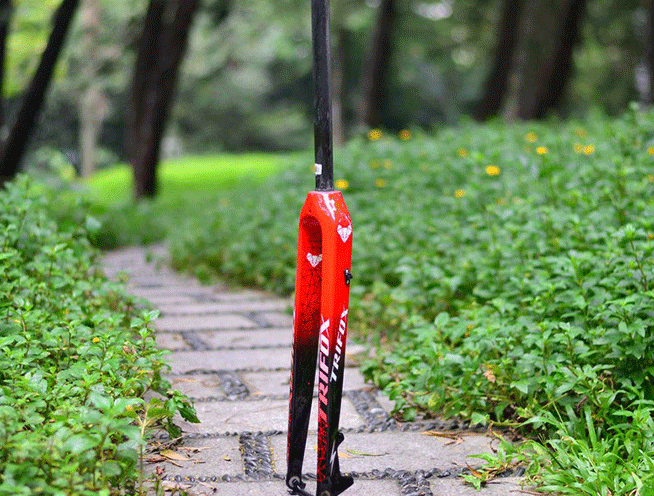
Conclusion:
The Trifox 29er Carbon Forks QMK200 are a solid choice for MTB riders who want a lightweight, durable, and stiff fork that enhances performance and rideability. With its non-tapered style, T800 carbon fiber, 3K weave, disc brake compatibility, and 29er wheel fitment, these forks tick all the boxes for a great MTB fork. We highly recommend the Trifox 29er Carbon Forks for anyone who seeks a quality upgrade for their MTB.

























































